



 |
 |
 |
 |
|
|
|
Stone Walls |
|
The subject of stones walls has been documented in several well researched books. Rather than reiterate the materials in those books, this webpage with supplement previously published materials with new information not covered elsewhere. |
|
Rip Rap Stone Wall |
|
|
||||||||||||||||||||||||||||||||||||||||
|
Straight Stone Wall with “knobs” |
|
The photo below shows a rather unusual stone wall. It is a stone wall, one stone wide (“single thrown wall”) with small “knobs” of stone evenly spaced and all on one side. The photo is from an old farm site in South Hampton, NH. What is the purpose of this wall? |
 |
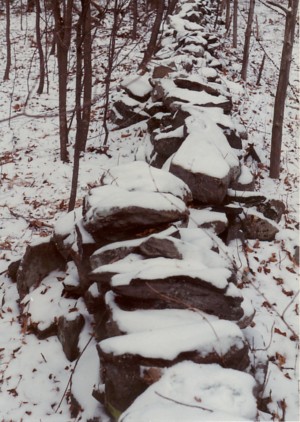 |
|
The answer to this enigma was found in this late 19th century photo. The “knobs” were stone piled up to hold wood fence posts used for barb wire fencing. |
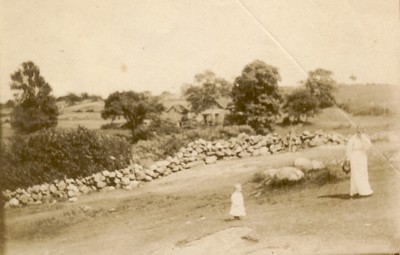 |
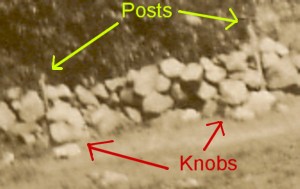 |
|||
|
Entrances in Stone Walls |
|||
|
|
|
The entrance to this farm field (below) had a wooden gate. The end of stone wall was built using large stones to prevent the wall from collapsing. This was a common practice. (Newbury, MA) |
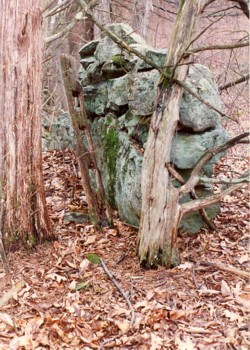 |
|||||
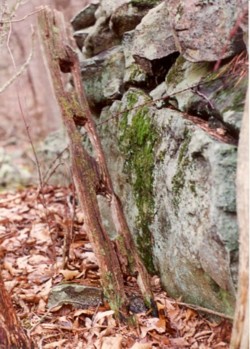 |
|||||
|
The Size of Stones in Walls |
|||||
|
Robert Thorson in his book Stone by Stone (2002) notes that the weight and shape of stones effects how high in the wall the stone is placed (pp.160-161). The photo below is a classific example of this effect. The heavier and more difficult to handle stones are on the bottom. The weight and size of stones decreases with the height of this stone wall. (Newbury, MA) |
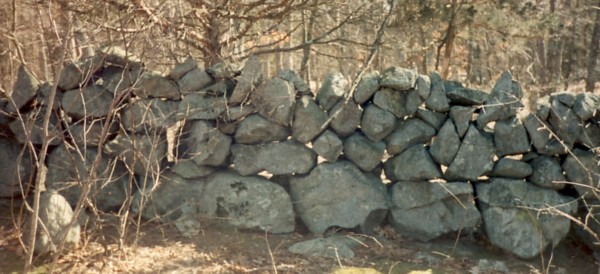 |
|||
|
Lace Walls |
|||
|
Susan Allport in her book Sermons in Stone (1990) called attention to the unusual lace walls found on Martha’s Vineyard (pp. 119-123). This unusual type of wall construction ocassional shows up elsewhere. The photos below are from the summited of Blue Job Mountain in New Hampshire. The top of this low mountain had been cultivated for wild blueberries. At the time these photos were taken, harvesting activities had only recently ceased operation. The stone wall shown in the photos created a large enclosed area around one of the blueberry fields on the summit. |
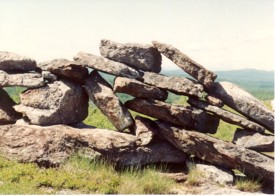 |
|||||
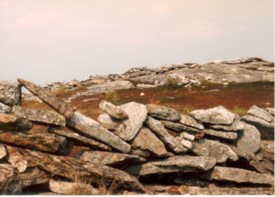 |
|||||
|
Serpentine Walls |
|||||
|
|
 |
|
|
|
|
 |